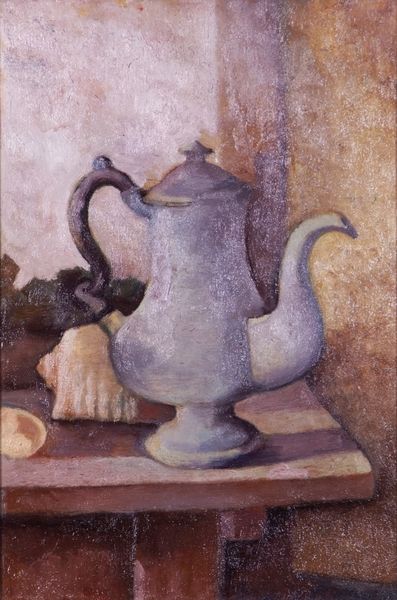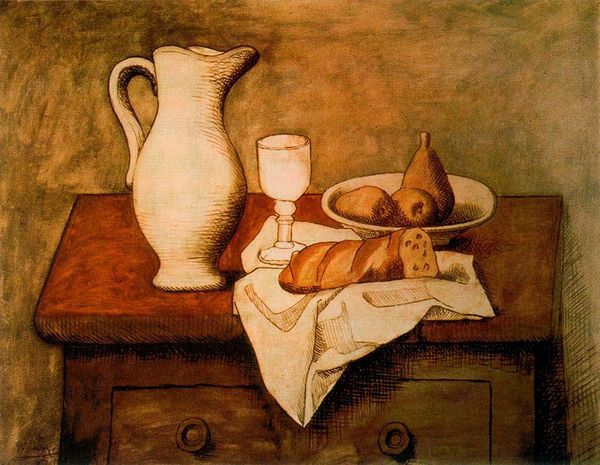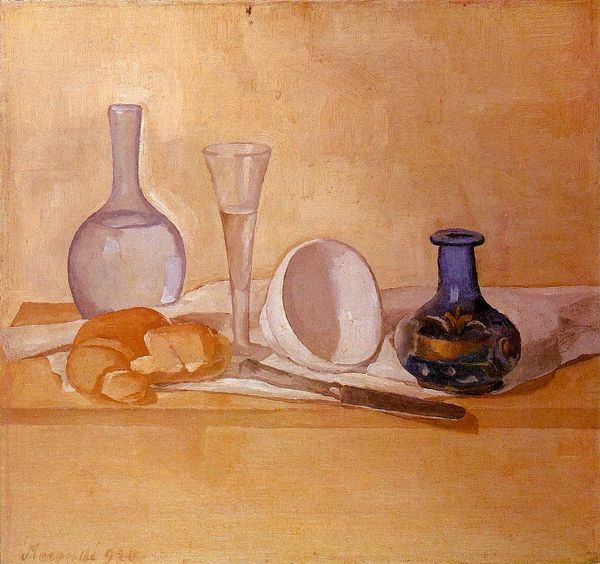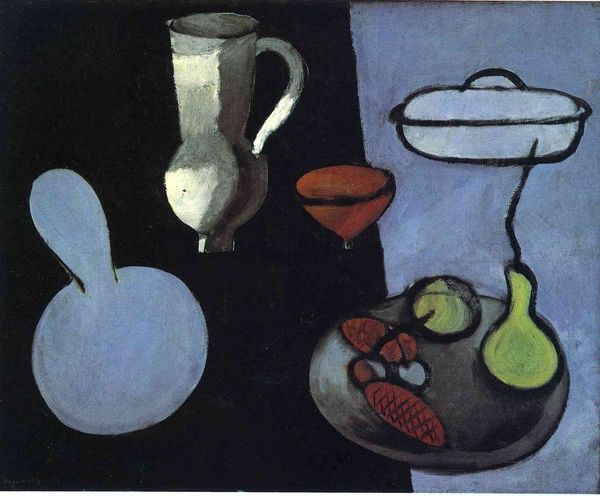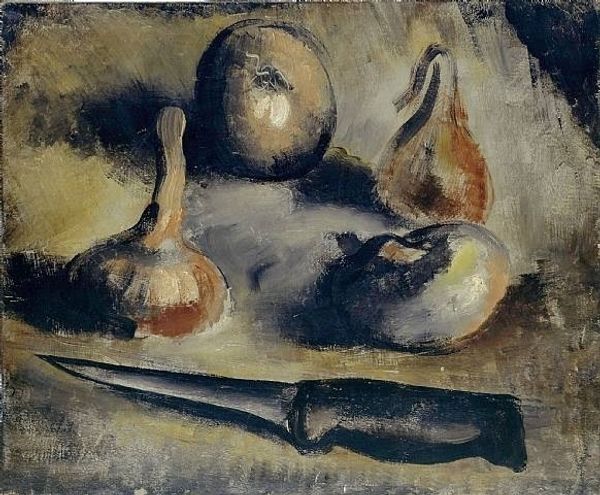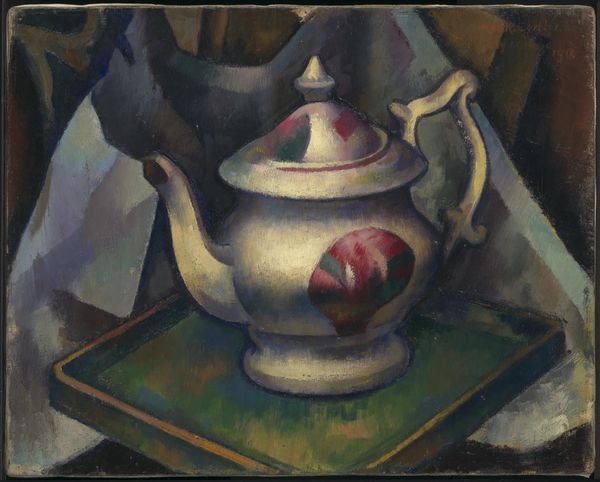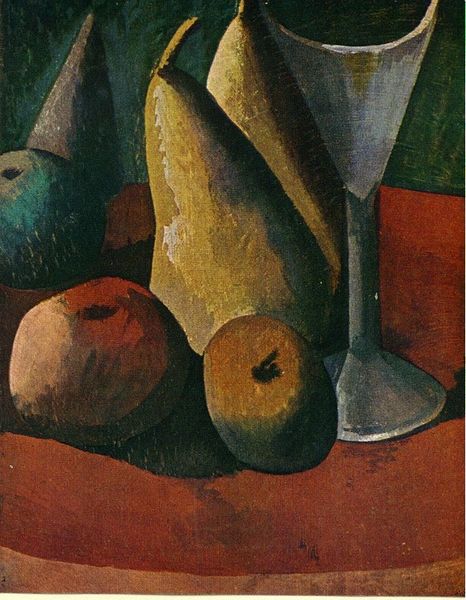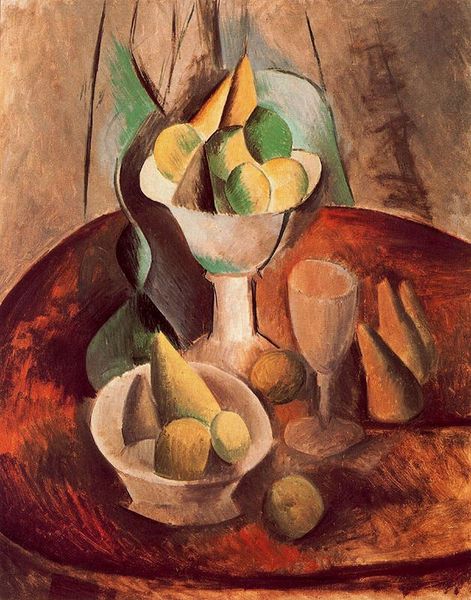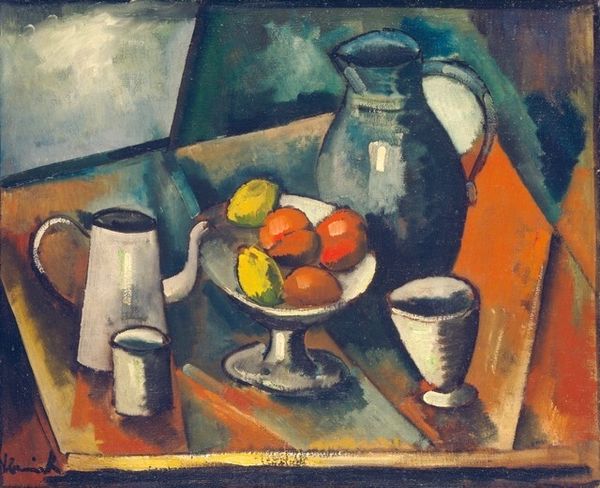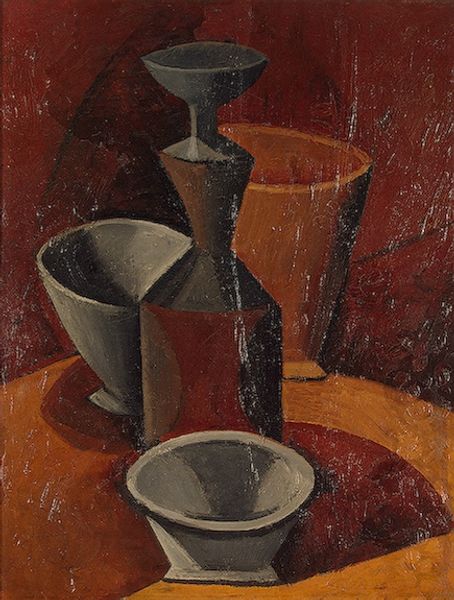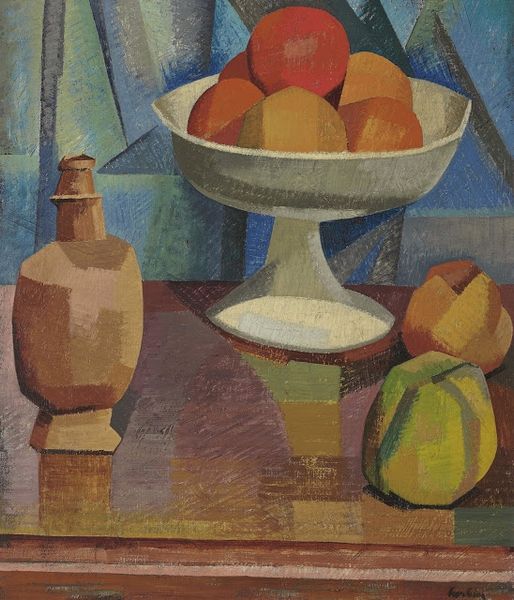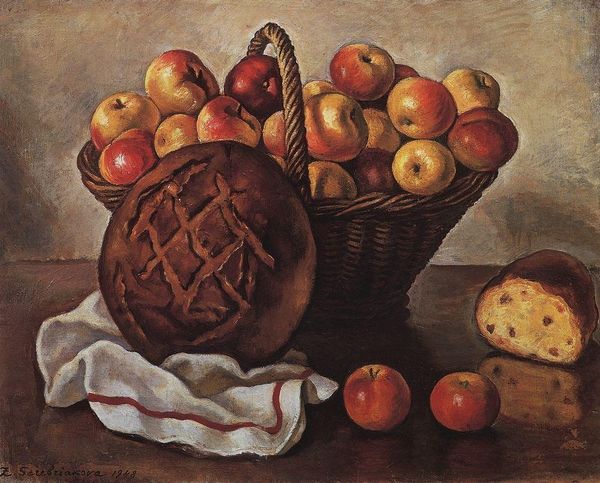
painting, oil-paint
#
still-life
#
cubism
#
painting
#
oil-paint
#
oil painting
#
fruit
#
modernism
Dimensions: 65 x 43 cm
Copyright: Public domain US
Curator: Today, we're looking at Pablo Picasso's "Still life with pitcher and apples," painted in 1919. A classic Cubist take on a traditional subject rendered in oil. What's your first impression? Editor: The immediate impression is quiet and restrained. The muted palette, predominantly greys and browns, evokes a certain melancholy. It's deceptively simple. Curator: That simplicity is interesting considering the era. Picasso, post-World War One, seemed to pull back from the more radical experiments of his earlier Cubist period. A shift towards classical subjects and a more subdued palette became characteristic of his work during this time. Editor: Indeed. Yet, even within this restraint, we can identify some of the symbolic gestures that speak beyond just pictorial representation. Notice the arrangement: the generous pitcher offers bounty, and the apples on the stand seem almost elevated, like precious offerings. Even the apples scattered before the pitcher evoke abundance. What kind of history does it evoke for you? Curator: Well, still life as a genre gained significant popularity through Dutch art where objects possessed strong religious allegories or alluded to mortality and the transience of life. It became popular amongst the emerging middle class and in that sense, a work such as this could also express a desire for comfort in an increasingly consumerist society. Though with this still-life, one could ask: is it purely aesthetic, a retreat to simpler pleasures perhaps? Editor: It’s compelling how the painting uses a domestic scene, yet carries an echo of much grander cultural symbols of abundance. While Picasso seemingly simplifies form, he complicates its cultural associations. It allows us to imbue familiar forms with a universal sensibility that invites the viewer to contemplate a sense of belonging beyond the realm of political discourse. Curator: The brushstrokes here are soft, not as angular as in his earlier Cubist work; one might even describe them as sensual in places. The colors have been blended as if evoking that very intimacy, even if there's that constant awareness that there are angles and structures lurking behind these softer contours. I think the piece succeeds precisely because Picasso manages to suggest both simultaneously. Editor: An important painting—thank you for guiding me to see beyond its deceptively humble appearance. Curator: My pleasure. A look back into a tumultuous period and it's striking how symbols reemerge as carriers of new collective feelings.
Comments
No comments
Be the first to comment and join the conversation on the ultimate creative platform.

